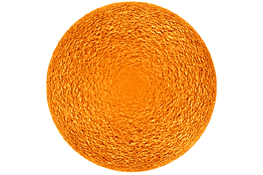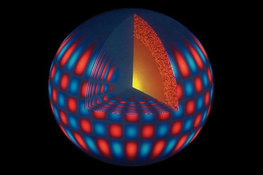PhD thesis projects offered
All partner institutes in the Solar System School (Institute for Astrophysics and Geophysics, Geoscience Center, and Max Planck Institute for Solar System Research) may offer and support PhD projects in the Solar System School. The PhD topics are as diverse as the research fields of the participating partner institutions. The topics include all areas of our own Solar system (the Sun and its planets and minor bodies), embedded in the wider geoscience and astrophysical context, and extend to other stars and their planetary systems. Correspondingly, the following disciplines in geoscience and astrophysics are represented in the Solar System School: Earth and planetary sciences, Cosmochemistry, Solar and stellar physics, helioseismology, asteroseismology, and to some extent extra-solar planets. Since the methods of research comprise instrumentation development, calibration and improvement , ground- and space-based observations, remote-sensing or in-situ measurements in space exploration missions, data analysis and interpretation, numerical simulations and theoretical modeling, some projects may additionally require good skills in laboratory work, in programming, in mathematics, or in engineering.
The following list gives an overview of the variety of research topics, but is not necessarily complete. As further projects may become available, this list will be updated. Please check the list shortly before submitting your application. Applications may be submitted through the online application portal in response to a call for applications.
Open PhD Projects
The Institute of Geophysics and Extraterrestrial Physics of the Technische Universität Braunschweig is looking to fill a researcher position as part of Prof. Jessica Agarwal’s research group, starting from the earliest possible date for a period of three years. Review of applications will begin on June 16, 2025, and continue until the position is filled.
more
Investigating the history of the Solar System and the formation and differentiation of planets through laboratory analyses of extraterrestrial samples
more
For PhD students whose project is already funded and who are applying for admission to the IMPRS.
more
For applicants who want to bring their own funding and their own project idea to the IMPRS.
more
Hydrodynamic simulations of near surface convection and waves in the Sun and stars
more
In the "Solar and Stellar Interiors" department, Laurent Gizon, Jesper Schou, Aaron Birch, Robert Cameron and others offer PhD projects in solar physics and astrophysics. Helioseismology and asteroseismology are used as important tools to study the oscillating Sun and stars.
more
The Institute of Geophysics and Extraterrestrial Physics of the Technische Universität Braunschweig is looking to fill a researcher position as part of Prof. Jessica Agarwal’s research group, starting from the earliest possible date for a period of three years. Review of applications will begin on June 16, 2025, and continue until the position is filled.
more
Investigating the history of the Solar System and the formation and differentiation of planets through laboratory analyses of extraterrestrial samples
more
Hydrodynamic simulations of near surface convection and waves in the Sun and stars
more
In the "Solar and Stellar Interiors" department, Laurent Gizon, Jesper Schou, Aaron Birch, Robert Cameron and others offer PhD projects in solar physics and astrophysics. Helioseismology and asteroseismology are used as important tools to study the oscillating Sun and stars.
more


















